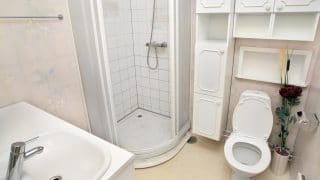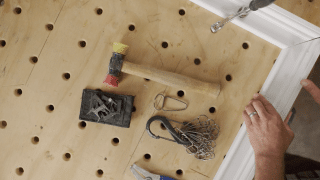
Plumbing isn’t just about getting water where you need it—it’s also about removing used water safely. A plumbing drainage system takes used water from fixtures and moves it to either the main sewer line or septic tank. And it must do so without contaminating clean water or leaking sewage.
What is a drainage system in plumbing?
A drainage system consists of piping that conveys sewage, rainwater, or other liquid waste to a point of disposal, either in the sewer system or septic tank. Its main objective is to collect and remove wastewater and keep sewer gases out of the building. Unlike the piping that brings water into a building, the piping for a drainage system is usually made of plastic or metal.
How does a drainage system work?
Clean, fresh water comes from the street or another water service, such as a well, and is piped to each plumbing fixture. Each fixture has a drain line that collects used water and waste, which flows to the main drain system through gravity. All drain lines are plumbed with a slope to help water flow freely; the main drain line goes to a municipal sewer line or septic tank on the property.
Vent piping provides air pressure to help drain water flow smoothly. Vent pipes are attached to the drain lines at each fixture and protrude through the roof. They are capped to keep animals and rain at bay, while allowing air to flow in.
Traps in the drainpipe collect dirty water and seal the pipe to keep sewer gases out of the building. There are two types of traps: S and P. S-traps are generally used in toilets while P-traps are used in sinks, tubs, and showers.
Common drainage system issues
Clogged drains
Clogged drains occur due to the buildup of hair or other debris in the drainpipe. They can often be cleared by pouring drain cleaner down the drain. But if the cleaner doesn’t dissolve the matter, a plumber can snake the line or remove the P-trap to clear the debris.
Sewer line break or leak
If the main sewer line underground has a leak or a pipe breaks, sewer water can contaminate the ground. A plumber can locate the leak by isolating the line, then dig up the pipe to determine the size of the damage. They may be able to replace a section of the pipe or repair it with a patch.
Plumbing isn’t just about getting water where you need it—it’s also about removing used water safely. A plumbing drainage system takes used water from fixtures and moves it to either the main sewer line or septic tank. And it must do so without contaminating clean water or leaking sewage.
What is a drainage system in plumbing?
A drainage system consists of piping that conveys sewage, rainwater, or other liquid waste to a point of disposal, either in the sewer system or septic tank. Its main objective is to collect and remove wastewater and keep sewer gases out of the building. Unlike the piping that brings water into a building, the piping for a drainage system is usually made of plastic or metal.
How does a drainage system work?
Clean, fresh water comes from the street or another water service, such as a well, and is piped to each plumbing fixture. Each fixture has a drain line that collects used water and waste, which flows to the main drain system through gravity. All drain lines are plumbed with a slope to help water flow freely; the main drain line goes to a municipal sewer line or septic tank on the property.
Vent piping provides air pressure to help drain water flow smoothly. Vent pipes are attached to the drain lines at each fixture and protrude through the roof. They are capped to keep animals and rain at bay, while allowing air to flow in.
Traps in the drainpipe collect dirty water and seal the pipe to keep sewer gases out of the building. There are two types of traps: S and P. S-traps are generally used in toilets while P-traps are used in sinks, tubs, and showers.
Common drainage system issues
Clogged drains
Clogged drains occur due to the buildup of hair or other debris in the drainpipe. They can often be cleared by pouring drain cleaner down the drain. But if the cleaner doesn’t dissolve the matter, a plumber can snake the line or remove the P-trap to clear the debris.
Sewer line break or leak
If the main sewer line underground has a leak or a pipe breaks, sewer water can contaminate the ground. A plumber can locate the leak by isolating the line, then dig up the pipe to determine the size of the damage. They may be able to replace a section of the pipe or repair it with a patch.
Septic tank break or leak
Like a sewer line break, a septic tank leak can cause contamination. A plumber or septic specialist can repair or replace the tank, using a similar process to a sewer line break to determine if the tank needs repairs.
MT Copeland offers video-based online classes that give you a foundation in construction fundamentals with real-world applications, like plumbing basics. Classes include professionally produced videos taught by practicing craftspeople, and supplementary downloads like quizzes, blueprints, and other materials to help you master the skills.







